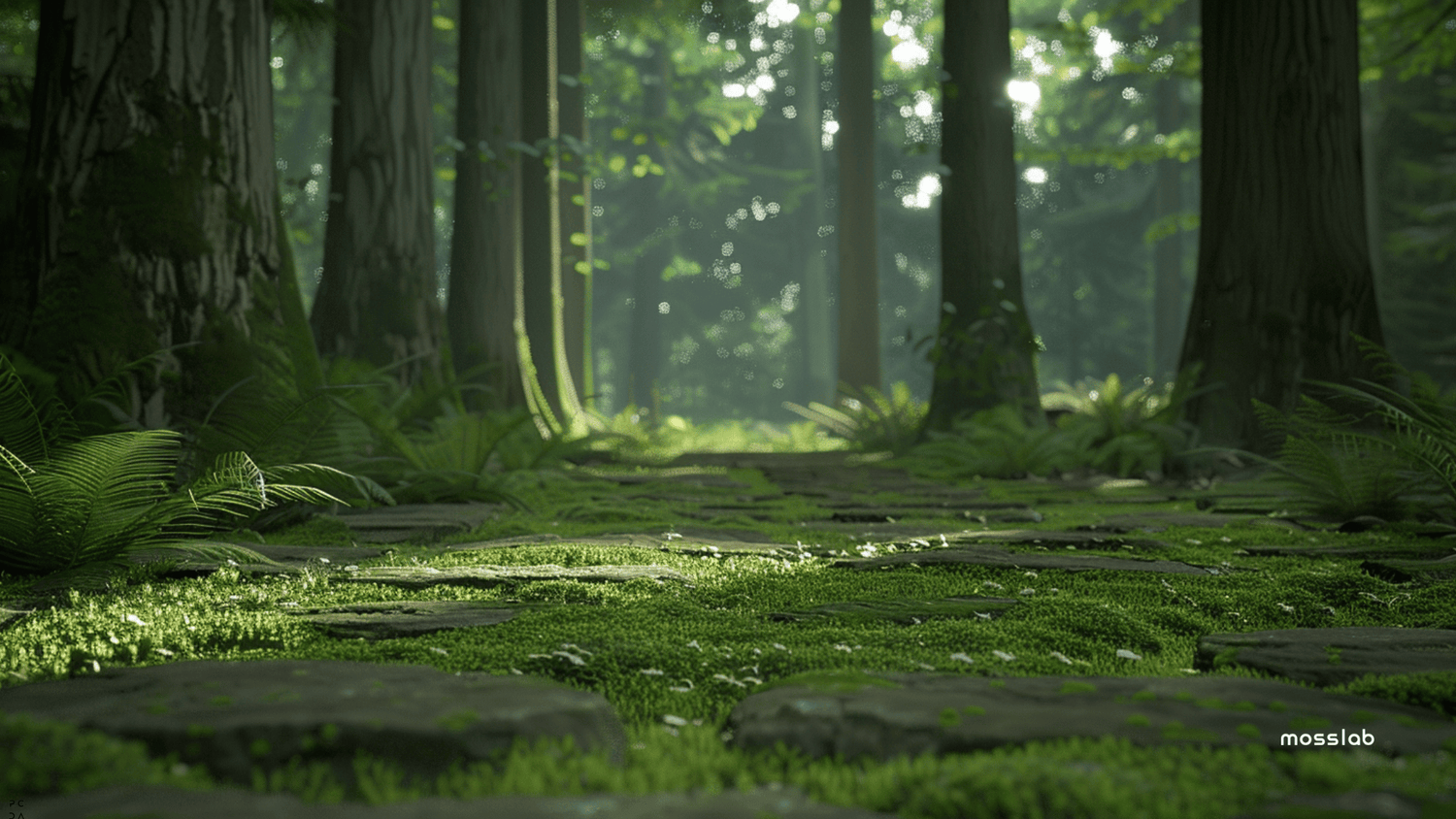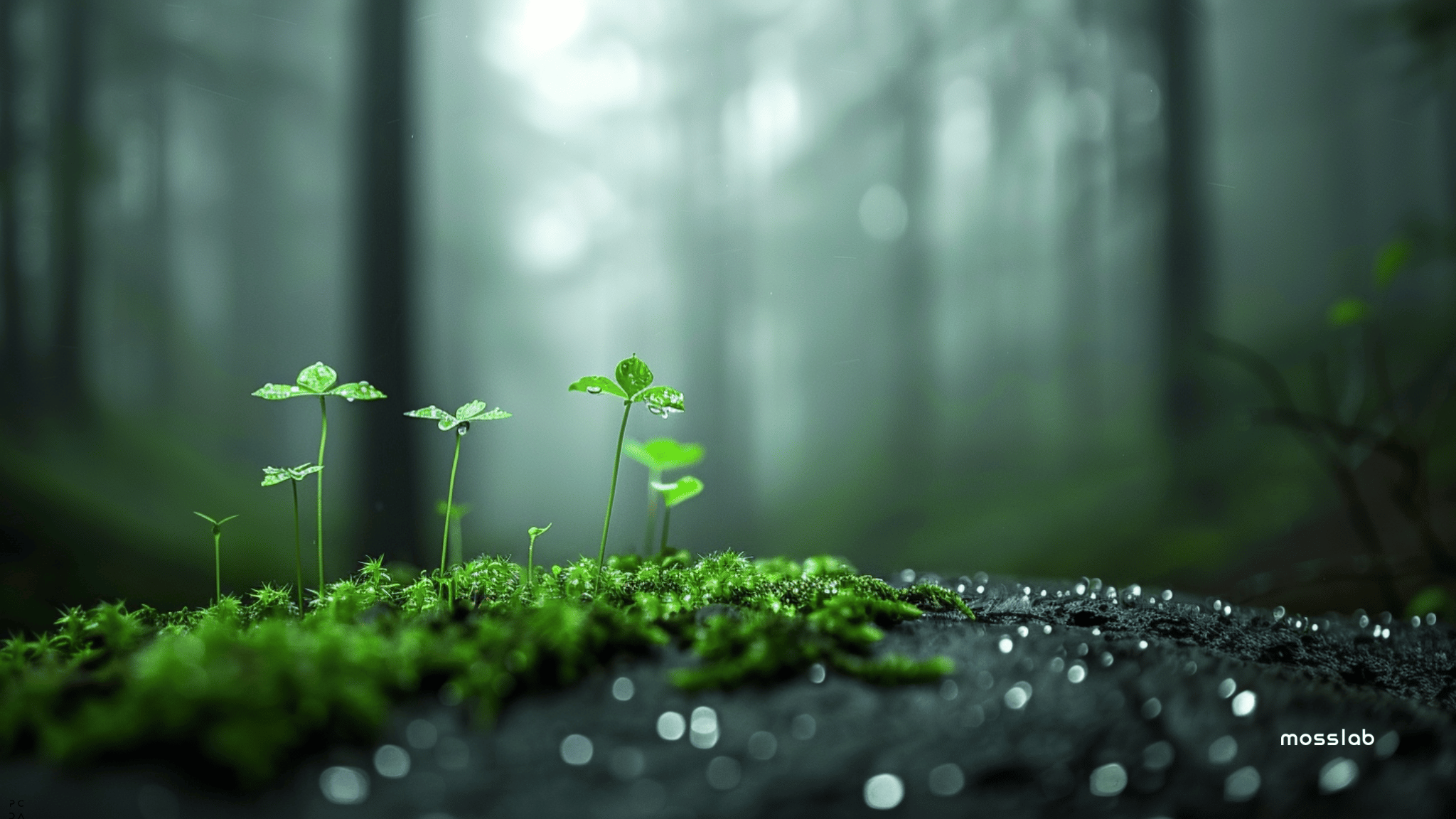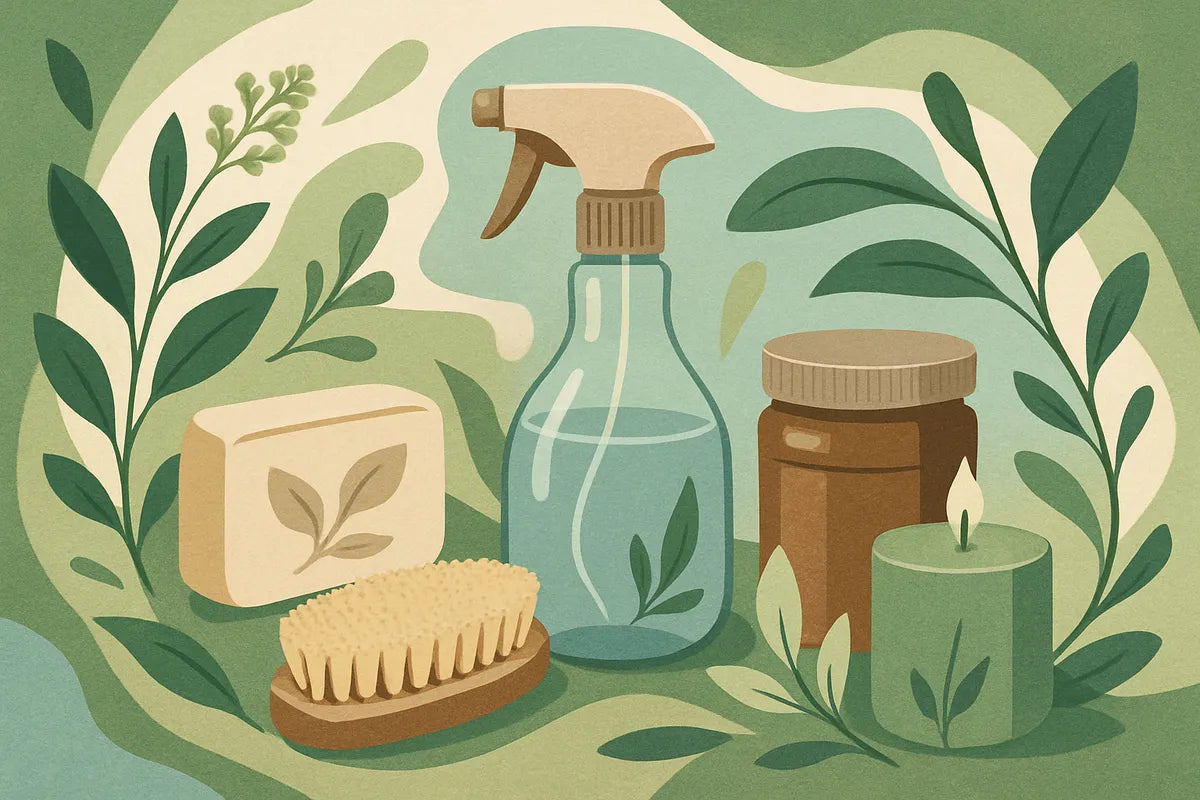You've probably walked past countless traditional gardens without giving them a second thought, but moss gardens represent something entirely different. They're quiet, almost meditative spaces that challenge everything you think you know about modern landscaping. While others chase the latest gardening trends, you could create something that's both ancient and cutting-edge. These unique moss garden ideas can transform your yard into a verdant sanctuary. The question isn't whether moss gardens work in contemporary settings—it's whether you're ready to discover just how transformative these green havens can be. This guide will explore how a moss garden can bring timeless beauty to your landscape.
The Allure of Moss: Is a Moss Garden Good for Your Garden?

A moss garden is an excellent addition to many gardens, offering a unique aesthetic and several ecological benefits. Moss is a primitive plant that can create a lush, carpet-like ground cover, especially in shade areas where grass struggles to grow. One of the primary advantages of a moss garden is its low maintenance nature. Unlike a traditional lawn, moss requires no mowing, fertilizing, or frequent pest control. This makes it an environmentally friendly option, reducing the need for chemicals like weed killer and excessive water consumption.
Moss also contributes to a healthy garden ecosystem. It helps retain moisture in the soil, benefits nearby plants, and can even help filter air and water. The vibrant green hues and varied textures of moss create a sense of tranquility and timeless beauty, transforming your garden into a peaceful retreat. For those seeking a sustainable and visually appealing alternative to traditional garden features, cultivating moss offers a compelling solution. It’s a fantastic way to embrace nature and create a serene landscape right outside your house.
Getting Started: How Do You Start a Moss Garden?

Starting a moss garden is a rewarding project that can create a unique and tranquil space in your yard. Here’s how to begin growing moss:
- Site Selection and Preparation: Begin by choosing a suitable location. Most moss species thrive in shade or partial shade and prefer acidic soil conditions. Areas under trees or on the north side of your house are often ideal. Clear the selected area of any existing vegetation, including grass, weeds, leaf litter, fallen twigs, and other debris. It's important to manage potential grass growth from the outset. While moss can grow on various surfaces, preparing the ground by ensuring it's relatively smooth and firm will aid moss growth. The chosen spot should ideally retain moisture without being waterlogged. Avoid areas that receive intense direct sun for prolonged periods.
- Acquiring Your Moss: There are several ways to obtain moss for your garden. You can purchase live moss from specialized nurseries or online suppliers like Moss Acres, a company associated with moss expert Dale Sievert. They often provide various species suited for different conditions. Alternatively, if you have existing moss patches in your yard or know someone who does, you can undertake transplanting moss. When foraging, ensure you have permission and harvest sustainably, taking only small portions from established patches.
- Planting the Moss: Once you have your moss, the process to lay moss is straightforward. Gently press the moss onto the prepared soil or surface. If you're using fragments, you can make a slurry by blending moss with buttermilk or beer and a small amount of water, then spreading it over the desired area. For sheet moss, simply lay it down like a carpet. Water the newly planted moss thoroughly. A gentle tamping with a timber press or a flat board can help ensure good contact between the moss and the soil. Consistent moisture is key, especially during the establishment phase of moss growing. Regular misting can help the moss take hold.
Essential Moss Species for Your Contemporary Moss Garden Design

Several key moss species can transform your contemporary garden into a thriving green sanctuary. These plants are perfect for creating diverse textures and moods.
Haircap moss (Polytrichum commune) is an excellent foundation choice for your moss garden, often resembling tiny pine forests. It can tolerate a range of light conditions and requires minimal maintenance, making it a robust option for those new to growing moss. Its upright moss growth habit adds vertical interest.
For shadier areas in your garden, perhaps inspired by Japanese gardens, consider Cushion moss (Leucobryum glaucum). This moss forms dense, pillow-like mounds and adapts beautifully to damp, acidic soil environments. Cushion moss is particularly striking when nestled amongst stone or at the base of trees.
Springy Turf Moss (Thuidium delicatulum) helps create that perfect, barefoot-friendly carpet you'll love for relaxation. It's a feathery moss that spreads readily, forming lush patches in your landscape.
When designing modern garden spaces, Heath Star Moss (Campylopus introflexus) excels in decorative rock arrangements and can add resilience to your moss gardening efforts. Glittering Wood Moss (Hylocomium splendens) provides unique texture along pathways, creating visual interest that elevates contemporary designs. These types of moss work together seamlessly, offering sustainable options that require less water and maintenance than traditional gardens while delivering a tranquil atmosphere. Many of these species also support lichens which can add further texture.
Designing with Moss: Integrating Features and Companion Plants
When you combine water features with stone elements and moss, you'll create a harmonious ecosystem that mimics nature's own design principles. Your moss garden benefits from the humid climate that water features naturally provide, allowing moss to flourish while softening hardscaped elements like stone pathways and retaining walls. You can strategically place moss-covered stones around ponds or streams to add texture and visual interest. These boulders serve dual purposes in modern garden designs—they provide structural elements while creating habitats. Consider incorporating gravel paths bordered by moss for a neat yet natural look.
Companion Plants for Your Moss Garden: Moss provides a beautiful backdrop for various other plants that thrive in similar conditions.
- Ferns: Many varieties of ferns are ideal companions, adding height and contrasting foliage. Their delicate fronds complement the dense carpet of moss. Think of species that love shade and moisture.
- Lichens: Often found growing alongside moss in nature, lichens can add intricate patterns and colors to your moss garden, especially on rock and woodland features.
- Shade-Tolerant Flowers: Small, shade-loving flowers like violets, primroses, or foamflower can provide seasonal color. Ensure they don’t overly compete with the moss for ground space.
- Hostas and Brunnera: These plants offer broad leaves that contrast beautifully with the fine texture of moss.
- Small Shrubs: Azaleas and rhododendrons, which prefer acidic soil and some shade, can be integrated into a larger moss landscape. The exposed roots of nearby trees can also become a feature, with moss growing over them, enhancing the woodland feel of your garden. These plants help create a multi-layered and biodiverse garden.
Urban Moss Gardens: Lush Greenery in Small and Indoor Spaces
Since urban spaces often present challenges with limited square footage and shade conditions, moss gardens offer an ingenious solution that transforms cramped balconies, patios, and courtyards into lush green retreats. Urban moss gardens thrive in these conditions while requiring minimal maintenance, making them perfect for busy city dwellers.
You can create stunning container gardens using various types of moss species, allowing flexible arrangements that maximize visual impact. Ensure your containers have adequate drainage holes to prevent waterlogging, as moss prefers consistent moisture but not standing water. Moss can be used to cover furniture and decorative elements, adding organic texture to your space. Consider planting moss between stepping stones to create inviting pathways that soften hard surfaces.
These shade garden designs provide excellent design inspiration. Furthermore, moss can even be cultivated indoors. A terrarium featuring live moss, small ferns, and perhaps a miniature rock can become a captivating focal point inside your house. When growing moss indoors, regular misting is crucial to maintain humidity levels. Small patches of moss in pots or containers on a windowsill (avoiding direct, intense sun) can bring a touch of the outdoors inside, proving that even the smallest spaces can yield big environmental and aesthetic benefits. Using moss indoors can be a unique way to decorate your house.
Creative Moss Applications: Beyond the Traditional Garden Path
While maximizing small urban spaces focuses on practical solutions, incorporating minimalist sculptures and artistic installations elevates your moss garden from functional to extraordinary. You can create striking focal points using natural materials like stone or wood that enhance your moss landscapes' organic feel. This contemporary design approach transforms traditional moss gardens into modern masterpieces.
For creative expression, combine moss with contrasting elements like metal sculptures or glass features. These artistic installations allow texture and color to evolve seasonally, creating dynamic visual interest. Another innovative idea is to use a timber press to gently encourage moss to adhere to a variety of surfaces, helping to create living art. Think about growing moss on vertical surfaces or in uniquely shaped containers. The versatility of moss allows for many creative applications in your garden and even indoors. You can even create small moss terrariums for your house.
Maintaining Your Moss Oasis: Tips for Lasting Beauty
Three fundamental practices form the backbone of sustainable moss garden maintenance: consistent moisture monitoring, gentle debris removal, and strategic access control. Your moss garden requires minimal intervention when you follow these sustainable practices, ensuring its low maintenance appeal. Since moss grows naturally in damp conditions, you'll need regular moisture checks to prevent drying, especially during the summer months.
- Monitor Moisture Levels Consistently: Check dampness regularly. During dry spells in summer or fall, you may need to water your moss. Use misting or gentle watering. For new moss growth areas, ensure the soil remains consistently damp.
- Remove Debris Gently: Periodically, remove fallen leaves, fallen twigs, leaf litter, and other debris. Use a soft broom, a leaf blower on a low setting, or pick them off by hand to avoid dislodging the delicate moss surfaces. This is particularly important in the fall. Keep the moss clear of thick layers of mulch that might be applied to surrounding plants.
- Weed Control: Hand-pull any weeds that may appear. Due to the dense nature of established moss, weeds are often less of a problem than in traditional gardens. Avoid using broad-spectrum weed killer solutions, as they can damage or kill your moss. If needed, spot-treat problem weeds carefully.
- Control Foot Traffic Strategically: Limit access to designated pathways, preserving moss integrity. Moss doesn't tolerate heavy foot traffic well.
- Seasonal Care: In spring, assess your moss garden for any areas that need patching or attention after winter. Ensure good moisture as temperatures rise. Summer requires vigilance with watering. Fall is primarily about keeping debris cleared. These simple steps will help your moss thrive and maintain its lush appearance throughout the year, ensuring healthy moss growth and vibrant green patches in your garden.
Potential Challenges: Understanding the Disadvantages of Moss in the Garden
While moss gardens offer many benefits, it's also important to be aware of potential disadvantages.
- Slow Establishment: Moss growing can be a slow process. Establishing a dense, lush moss garden can take time and patience, sometimes a few years, depending on the species and conditions.
- Competition from Weeds and Grass: In some environments, moss can be outcompeted by vigorous weeds or encroaching grass, especially if the conditions are not perfectly suited for moss growth. Diligent weeding may be necessary to prevent this and control unwanted grass growth.
- Perception in Lawns: For some, moss in a lawn is seen as an indicator of poor soil health, excessive shade, or drainage issues. While a deliberate moss garden is different, this perception can be a hurdle if you're converting part of a traditional lawn.
- Slippery Surfaces: Moss can become quite slippery when wet, which might be a concern for pathways or areas with foot traffic, particularly for homes with children or elderly individuals.
- Specific Needs: Different moss species have varying requirements for light, moisture, and soil pH. Success depends on choosing the right moss for your specific garden conditions and being able to provide them.
- Not Ideal for Heavy Use Areas: Moss generally does not withstand heavy foot traffic. It's best suited for ornamental areas, between paving stones, or in parts of the yard that are not frequently walked upon.
- Debris Accumulation: Fallen leaves, fallen twigs, and other debris can smother moss if not regularly and gently removed. This makes maintenance in woodland settings or under large trees more demanding.
Understanding these potential drawbacks allows for better planning and management of your moss garden, ensuring it remains a beautiful and enjoyable feature of your landscape.
Expanding Your Green Canvas: Moss in the Wider Yard and Woodland
Integrating moss into the broader landscape of your yard and any adjacent woodland areas can create a truly immersive naturalistic setting around your house. Instead of confining moss to a small, dedicated moss garden, consider allowing it to spread and form natural patches on the ground, especially in shady areas under trees where grass falters. This approach can unify different parts of your garden with a consistent green texture.
In a woodland setting, moss can beautifully cover the ground, climb over old logs, and even adorn the exposed roots of mature trees, enhancing the enchanted feeling of the woods. You can encourage moss growth on stone retaining walls or along the edges of gravel pathways, softening hard lines and blending them more naturally into the landscape. For larger patches, transplanting moss in sections during the cool, damp weather of spring or fall can accelerate coverage. These larger expanses of moss can significantly reduce the area needing traditional lawn care, saving water and effort. The use of moss can extend beyond the immediate garden around your house into the wilder parts of your yard, creating a seamless transition to nature. Consider using different types of moss to create varied textures and shades of green across larger areas of ground. Strategic placement of moss can also help with soil erosion control on gentle slopes in your yard or woodland areas. Using containers with moss and ferns on patios near these woodland settings can also tie the landscape together. Remember to ensure good drainage holes in any containers used outdoors.




